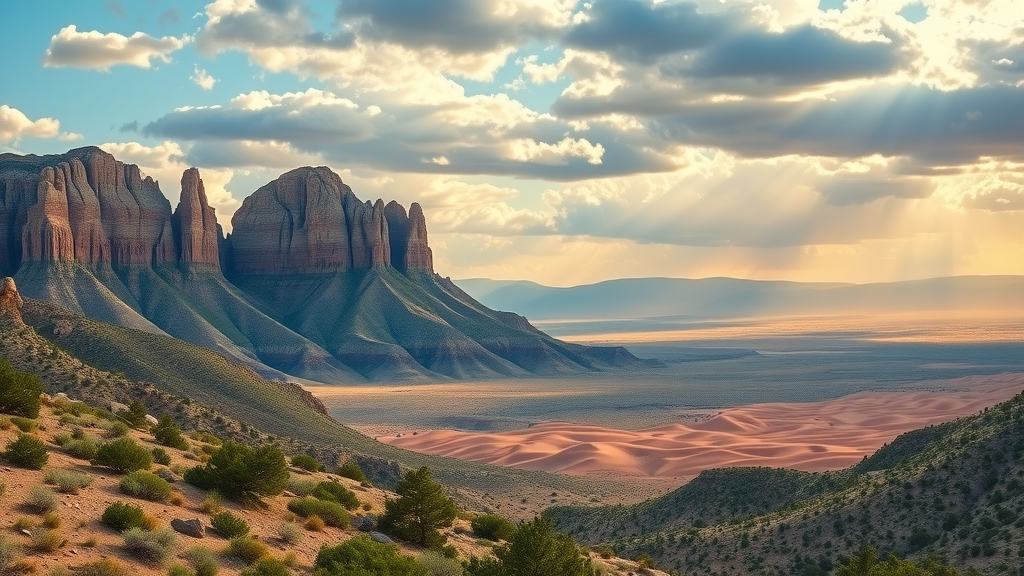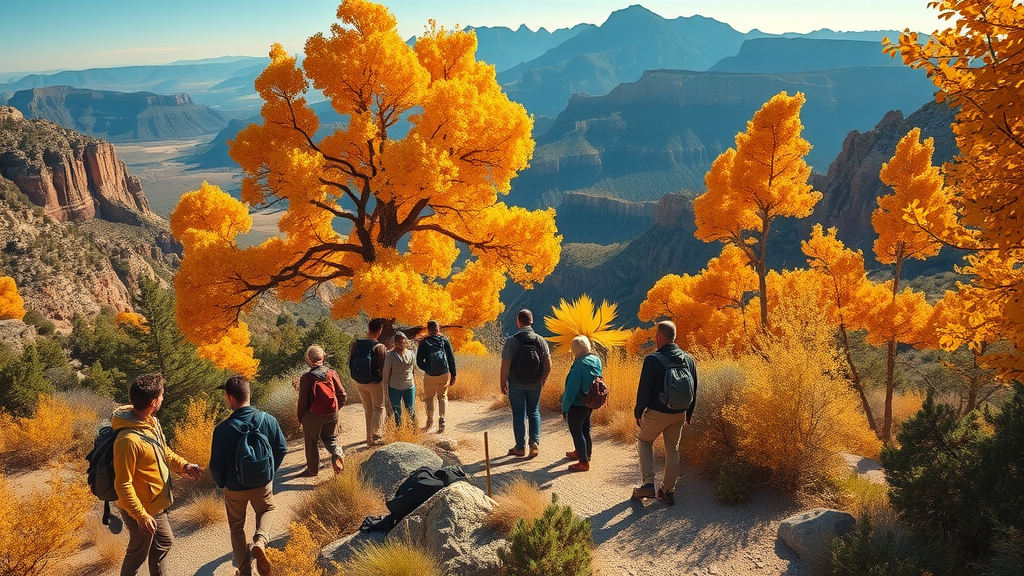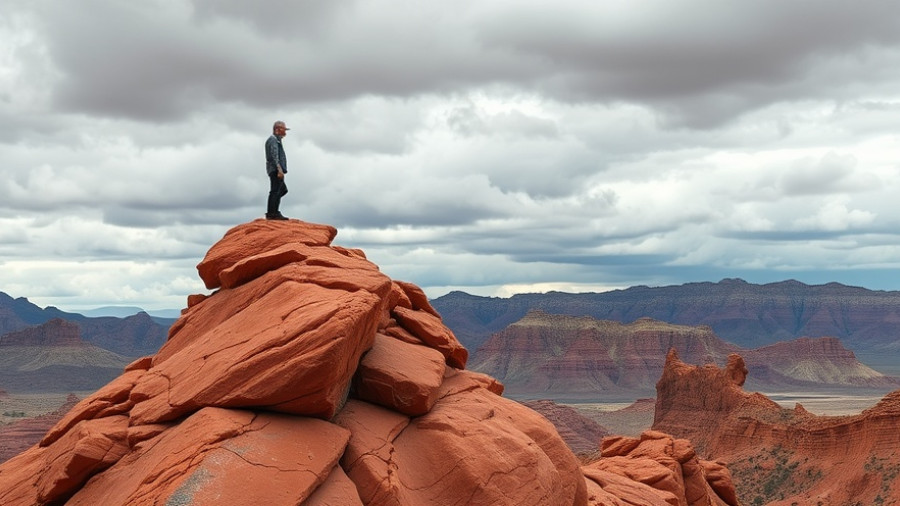Why Guadalupe Mountains National Park Is a Must-See Natural Treasure
Standing in the shadow of towering peaks, surrounded by ancient fossil reefs and the silent sprawl of desert dunes, one can’t help but wonder how long these wonders will endure. In a time when wild spaces are shrinking and authentic adventures are harder to find, Guadalupe Mountains National Park offers something increasingly rare: a landscape still governed by nature’s unwavering hand. Whether you’re craving the silent majesty of mountain vistas or a window into deep time, the significance of this park goes far beyond a simple hike or daytrip.
Introducing Guadalupe Mountains National Park early in any discussion about North America's unique landscapes sparks a deeper curiosity. Why does this corner of West Texas hold such ecological, geological, and cultural value? What truths can be uncovered in a place known for the world’s most extensive Permian fossil reef and the four highest peaks in Texas? As our understanding of pristine environments grows ever more urgent, recognizing the multifaceted importance of this park is valuable not only for seasoned adventurers, but for anyone seeking the stories of conflict, cooperation, and survival etched into its wild terrain. This article will guide you through what makes Guadalupe Mountains National Park critical to explore, understand, and protect—before such opportunities vanish behind gates or time itself.

Decoding the Guadalupe Mountains: More Than Just Texas’s Highest Peaks
Guadalupe Mountains National Park stretches across a rugged expanse where mountains, canyons, and desert meet in a dramatic collision. While many are drawn by the prospect of scaling Guadalupe Peak—the tallest mountain in Texas—the true depth of this national park lies in its biodiversity and the fascinating strata beneath your feet. The park is renowned as home to the most extensive Permian fossil reef on the planet, a living textbook on the geologic forces that shaped not only West Texas but significant parts of ancient Earth. Protection of these resources preserves stories that begin more than 250 million years ago, with evidence of ancient seas imprinted in the very rocks you now hike over.
Exploring the definition of this national park means looking well beyond the surface. Its preserved wilderness is not just a backdrop for outdoor recreation, but an active repository of flora and fauna adapted to a uniquely harsh yet beautiful environment. The intersection of desert, mountain, and sky supports a dynamic collection of life—from elusive mountain lions to migratory birds passing along their transcontinental routes. When entry points fill up in peak seasons or trails close to protect endangered species, the stakes of not understanding this park’s fragility come into sharp focus. Without a strong grasp of why places like Guadalupe Mountains are protected, visitors risk missing both the wonder and the responsibility that come with venturing here.

How Experiences at Guadalupe Mountains National Park Elevate Adventure and Reflection
With its expansive wilderness and striking geological features, Guadalupe Mountains National Park offers more than scenic beauty—it’s an immersive, perspective-shifting experience. For visitors who take time to explore its canyons and peaks, the park becomes a place where time feels elastic and priorities shift away from screens and schedules. From popular and accessible trails like the Pinery Trail near the Visitor’s Center to longer backcountry treks, each path reveals new layers of ecological diversity and unforgettable views. For those planning a visit, utilizing resources like the official NPS app and preparing with the park’s “Ten Essentials Plus One” guidance ensures safety and a deeper connection to the land.
The value of a visit isn’t solely tied to outdoor pursuits; exploring the park’s historical sites, such as the Frijole Ranch Museum, weaves in a rich human narrative. These landmarks tell stories about lives shaped by adversity and ingenuity, from hardy ranchers to the Indigenous peoples who called these mountains home. Whether you’re watching the sun set over arid dunes, birding in the canyons, or marveling at fossils embedded in stone, the outcomes stretch far beyond another national park checkmark. Memories forged here often quicken a lifelong respect for wilderness, conservation, and the lessons only the unfettered outdoors can teach.

From Fossils to Flora: Exploring the Park’s Living Natural History
The allure of Guadalupe Mountains National Park is inseparable from its remarkable paleontological and ecological significance. As the guardian of the planet's most extensive Permian fossil reef, the park offers a direct line to Earth’s distant past, where ancient marine life flourished. Today, visitors can view fossil evidence on certain trails, providing a tangible sense of time’s sweep and nature’s resilience. Birding enthusiasts find the park equally captivating, as a major migratory corridor brings diverse avian species to its ridges and canyons throughout the year. Rare plant life, shaped by elevation and desert extremes, adds bursts of color and fragility to the rocky landscape.
Such natural history is not static; it’s continuously interpreted and protected through stewardship and research. Park visitors participating in guided hikes or reviewing interpretive materials encounter a living educational resource with relevance for scientists and schoolchildren alike. The mosaic of habitats—desert, woodland, riparian, and high-elevation forest—supports an astonishing array of wildlife. Confronting the reality that habitats like these are globally endangered, Guadalupe Mountains becomes both a classroom and a sanctuary. Understanding the stakes involved in preserving biodiversity here drives home the park’s value in our rapidly changing world.

Planning Smart: Safety, Access, and the Reality of Remote Wilderness
A journey into Guadalupe Mountains National Park is as much about preparation as it is about adventure. Unlike parks centered around developed infrastructure and drive-through sightseeing, this landscape demands thoughtful planning and self-reliance. The park’s official guidance—carrying the “Ten Essentials Plus One”—reflects the unpredictability of weather, terrain, and remoteness. Resources such as the Visitor’s Center and the NPS app can help visitors update their itineraries in response to changing conditions, sudden crowd surges in fall and spring, or unexpected trail closures due to conservation efforts.
Access isn’t universal within the park and is shaped by unique regulations. For example, pets are restricted on most trails to protect sensitive wildlife and reduce resource impacts, a rule that may surprise some but underscores the park’s role as a haven for rare species. Those venturing into the backcountry to backpack, bird, or explore are often rewarded with solitude and a sense of discovery, even during busy seasons. Planning ahead is essential—not only for practical reasons but to ensure your visit aligns with the wild, unspoiled spirit that defines the Guadalupe Mountains experience.
Why Understanding Conservation Efforts Matters for Every Visitor
When travelers ask about scenic drives or compare stringent pet policies, they’re often encountering the living legacy of rigorous conservation. The answer to “where is the scenic drive?” resides in the history and mission of the park: preservation comes before convenience. The prioritization of wilderness values means the park resists the overdevelopment that characterizes more accessible destinations. This stance ensures that experiences—whether a strenuous climb to one of eight of Texas’s ten tallest peaks or a quiet evening under unspoiled night skies—remain authentic and undiluted by crowds or industrial tourism.
The park’s commitment to environmental sustainability is evident in its laws, policies, and visitor education materials. Information about special use permits, trail etiquette, and leave-no-trace practices is broadly communicated to both encourage and empower each visitor as a stakeholder in preservation. By understanding these principles, every visitor becomes part of a broader continuum, sustaining a landscape that offers inspiration, challenge, and renewal generation after generation.
Stewardship and Storytelling: The Guadalupe Mountains National Park Approach
Guadalupe Mountains National Park’s approach to stewardship is rooted in honoring both natural wonders and the human stories that thread through the region’s history. The park’s philosophy is to protect mountains, canyons, and fossil reefs as living museums, preserving fragile ecosystems and cultural markers for future generations. This vision extends to offering diverse educational experiences, from interpretive exhibits at the Visitor’s Center to immersive explorations along its vast trail network.
Commitment to public safety and resource protection underpins everyday management. The park’s educational messaging consistently emphasizes the importance of preparation—reflected in the “Ten Essentials Plus One”—and the value of each visitor’s role in conservation. Through these efforts, the park nurtures a culture in which every individual encounter is both adventure and act of stewardship. In doing so, Guadalupe Mountains National Park stands as a testament to the balance between human enjoyment and long-term ecological responsibility, inviting visitors to become engaged participants in the unfolding story of America’s wild places.
Voices from the Trail: What Visitors Are Saying about Their Guadalupe Mountains Experience
For many, the real value of Guadalupe Mountains National Park emerges in the personal stories and first impressions of those who explore its trails and museums. These encounters testify to the park’s unique mix of natural beauty, history, and thoughtful management. As one recent visitor shared after spending time at several of the park’s landmarks:
This was my first time visiting Guadalupe Mountains, and I absolutely loved it! Although I didn’t get to explore everything, I was able to stop by the Frijole Ranch Museum and the Pine Springs Visitor Center. Both were worth the visit and gave me a glimpse into the rich history and beauty of the area.The drive in was smooth and scenic—the highway is well-paved, wide, and clean, with beautiful views all around. I definitely plan to come back, especially in the fall to see the foliage and try out more of the hiking trails. Can’t wait to return!
Experiences like these capture the lasting impact of a visit: awe at the park’s scale, delight in its well-stewarded history, and a yearning to return. For those considering their first or next adventure, stories from fellow explorers illustrate how the Guadalupe Mountains can change perspectives and offer a rare blend of serenity and discovery—rewards accessible to all who take the leap and plan their visit.
The Ongoing Importance of Preserving Guadalupe Mountains National Park
The enduring significance of Guadalupe Mountains National Park stems from its unspoiled peaks, rare ecosystems, and commitment to preserving irreplaceable natural history. Far beyond its status as Texas’s highest ground, the park represents an ongoing dialogue between scientific discovery, recreation, and environmental stewardship. As more visitors seek meaningful engagement with wild places, the role of the Guadalupe Mountains as both sanctuary and classroom becomes ever more vital.
National parks like this one set the bar for conservation elevated by interpretation, education, and community trust. The park’s ongoing investment in safety, education, and resource protection anchors its reputation as an authority in public lands stewardship. Experiencing the Guadalupe Mountains not only nourishes an adventurous spirit; it builds a shared commitment to protect these wild resources for future generations. For those seeking the value of wild spaces, the Guadalupe Mountains National Park remains a beacon of what is possible—if explored, respected, and cherished.
Contact the Experts at Guadalupe Mountains National Park
If you’d like to learn more about how visiting Guadalupe Mountains National Park could benefit your understanding of Texas’s natural and cultural heritage, reach out to the knowledgeable team at Guadalupe Mountains National Park.
📍 Address: Dell City, TX 79847, USA
📞 Phone: +1 915-828-3251
🌐 Website: https://www.nps.gov/gumo/
Guadalupe Mountains National Park Location and Hours
For detailed visitor hours and current access information, consult the official Guadalupe Mountains National Park website or contact +1 915-828-3251. Regular hours may vary by season and operational needs.

 Add Row
Add Row  Add
Add 





Write A Comment